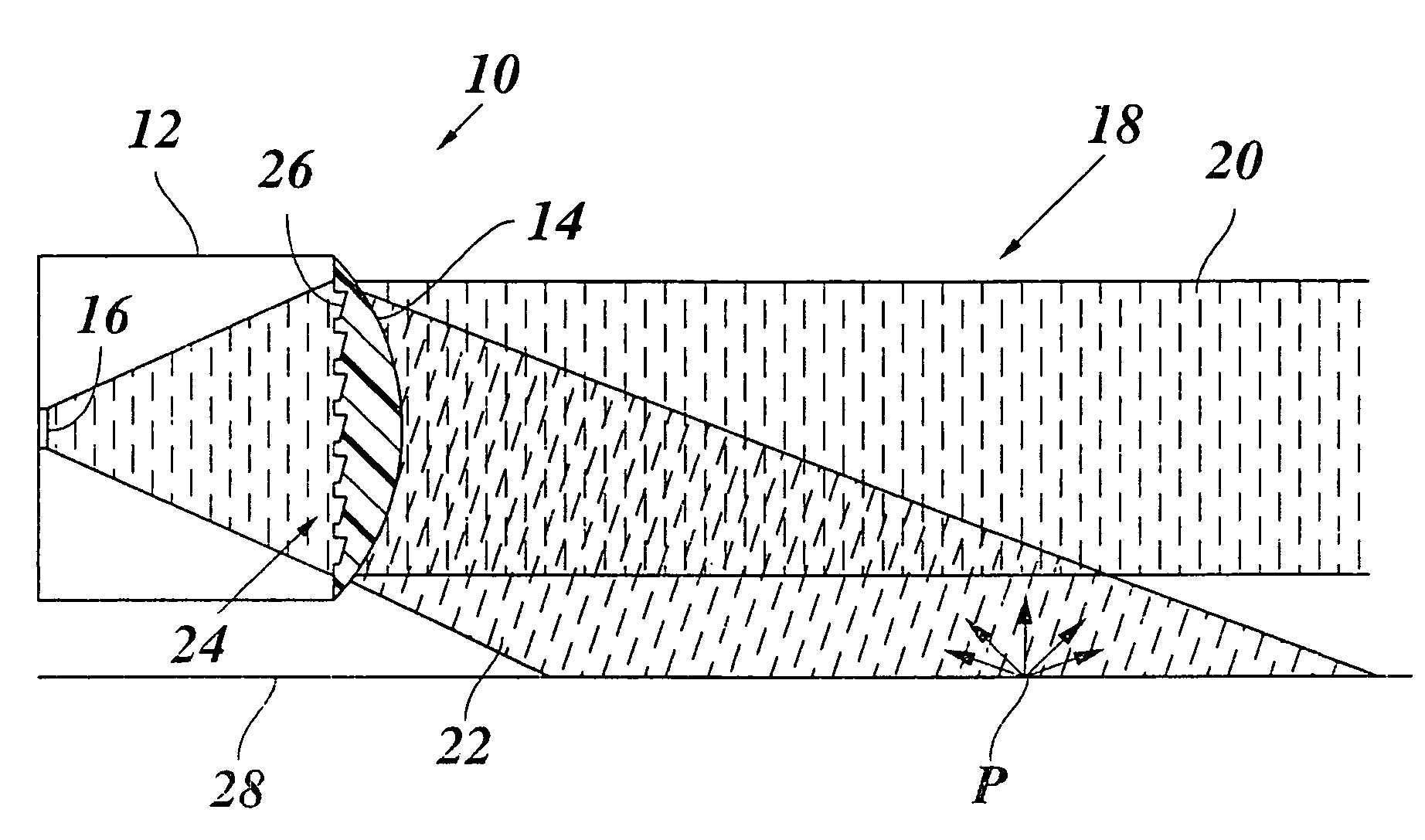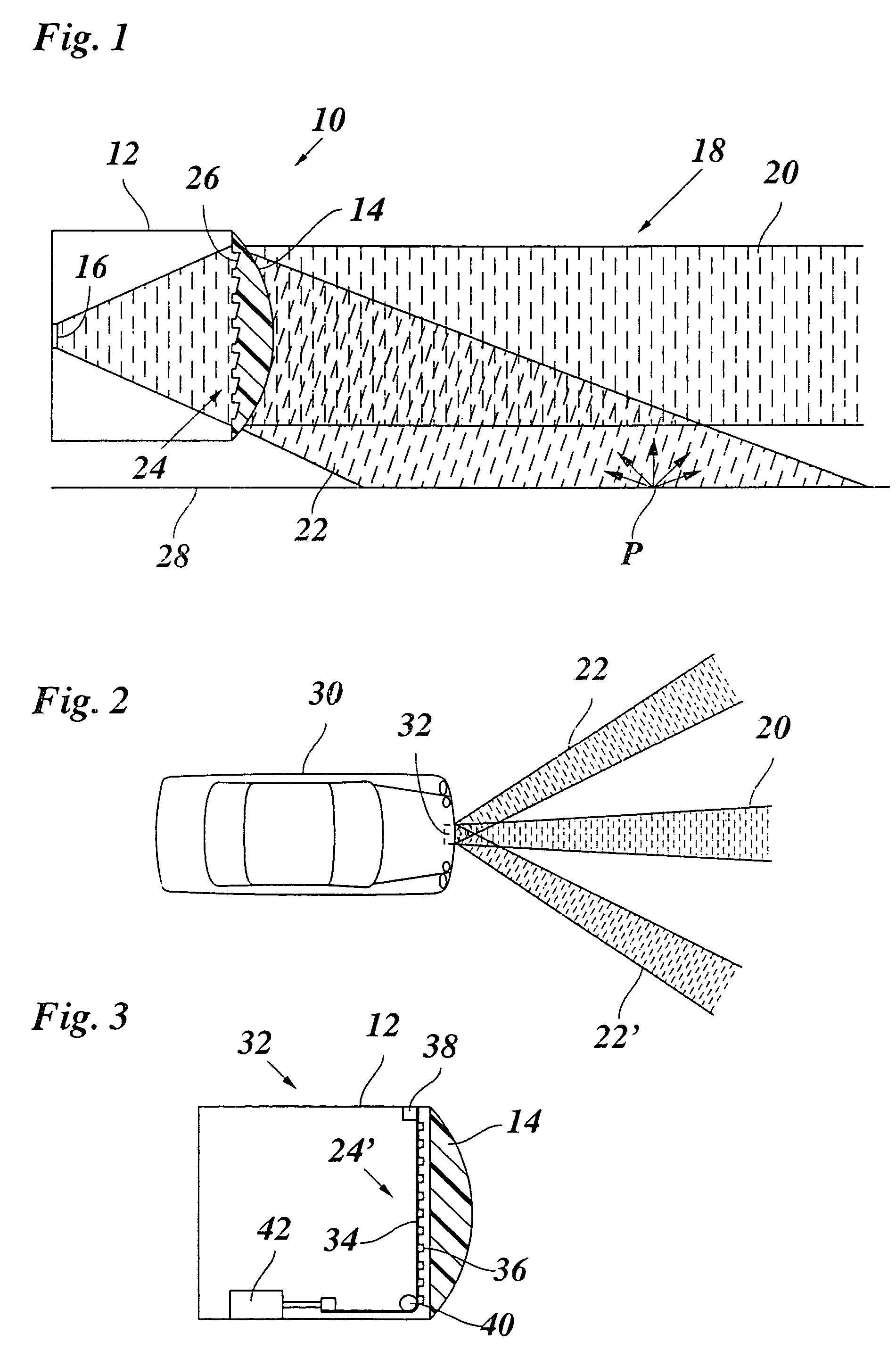Radar sensors for motor vehicles
a technology for motor vehicles and radar sensors, applied in the direction of distance measurement, instruments, and using reradiation, can solve the problems of loss of sight of radar sensors, and achieve the effects of reducing the grating constant, and reducing the grating angl
- Summary
- Abstract
- Description
- Claims
- Application Information
AI Technical Summary
Benefits of technology
Problems solved by technology
Method used
Image
Examples
Embodiment Construction
[0014]In FIG. 1 a radar sensor 10 is shown schematically in a vertical section which, for instance, is installed in the front of a motor vehicle. A housing 12 of the radar sensor is closed at the front end by a plano-convex lens 14, which is made of a plastic material having a suitable refractive index that is transparent to microwaves. On the inside of housing 12, approximately in the focal plane of lens 14, there are several antenna elements 16 of which only one is seen in the drawing, and they are situated side by side in such a way that, in connection with lens 14, they generate several radar beams 18 that are slightly angularly offset against one another, which lie in a horizontal plane that goes through the optical axis of lens 14 and is perpendicular to the plane of the drawing in FIG. 1. By evaluating the intensity differences and phase differences between the radar echoes received by the different antenna elements 16, the angle of azimuth of the located objects may be deter...
PUM
 Login to View More
Login to View More Abstract
Description
Claims
Application Information
 Login to View More
Login to View More - R&D
- Intellectual Property
- Life Sciences
- Materials
- Tech Scout
- Unparalleled Data Quality
- Higher Quality Content
- 60% Fewer Hallucinations
Browse by: Latest US Patents, China's latest patents, Technical Efficacy Thesaurus, Application Domain, Technology Topic, Popular Technical Reports.
© 2025 PatSnap. All rights reserved.Legal|Privacy policy|Modern Slavery Act Transparency Statement|Sitemap|About US| Contact US: help@patsnap.com


